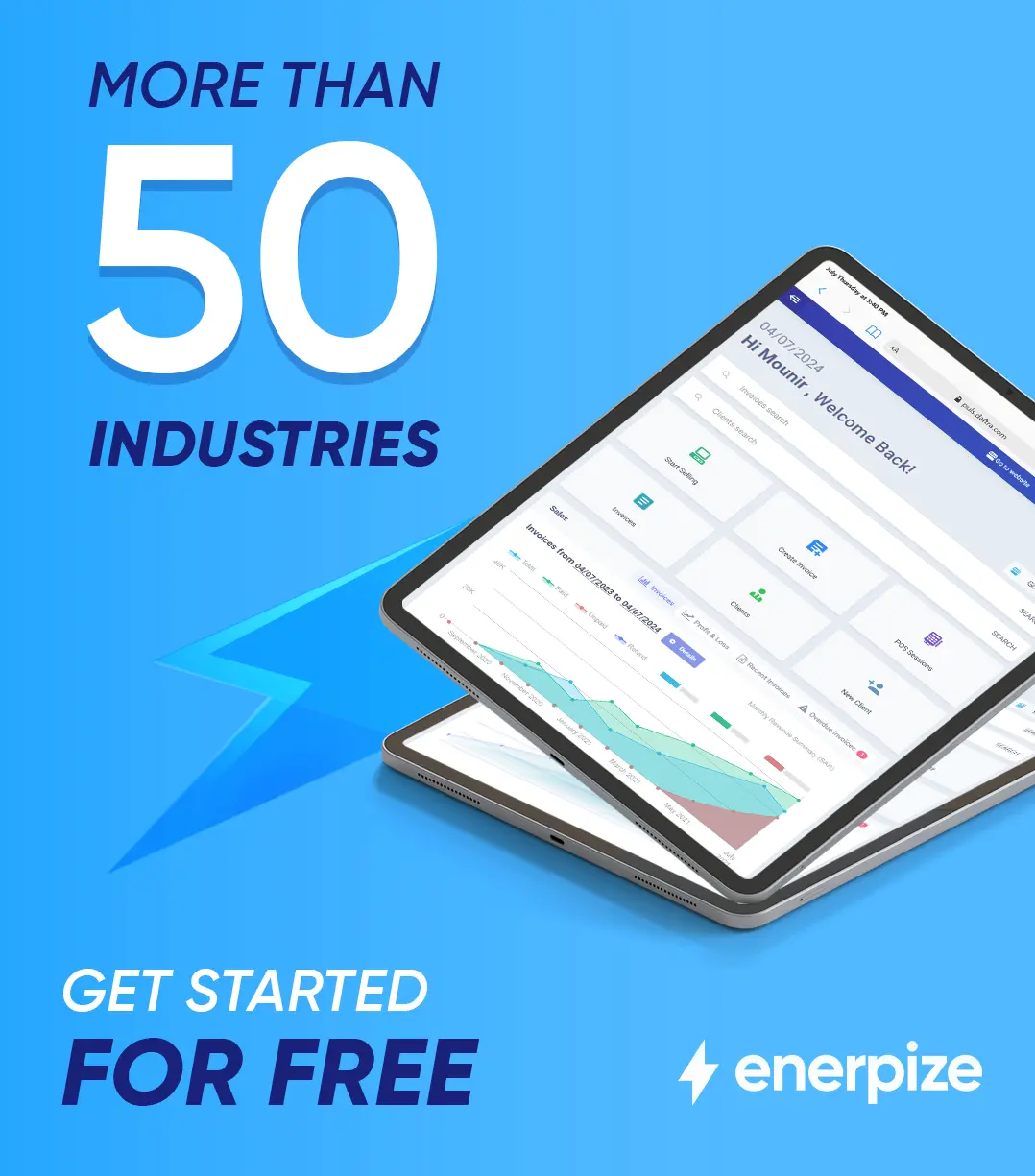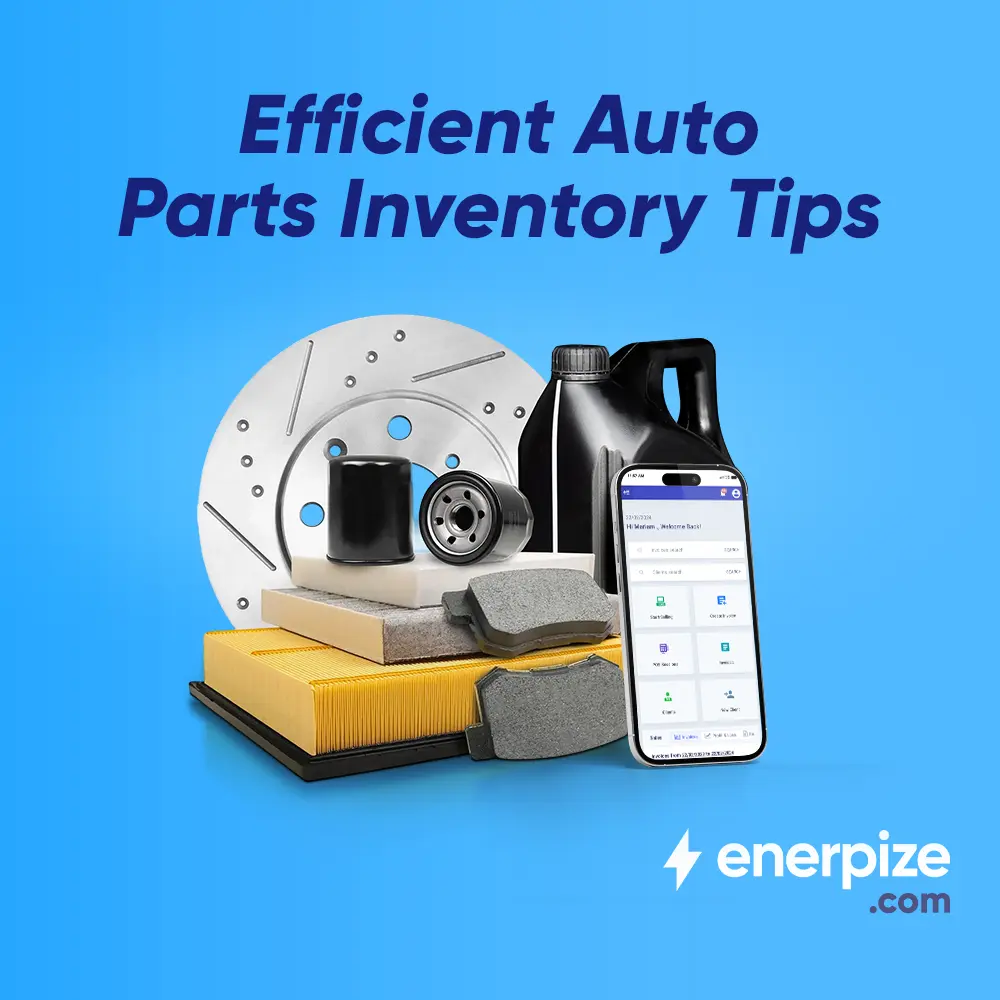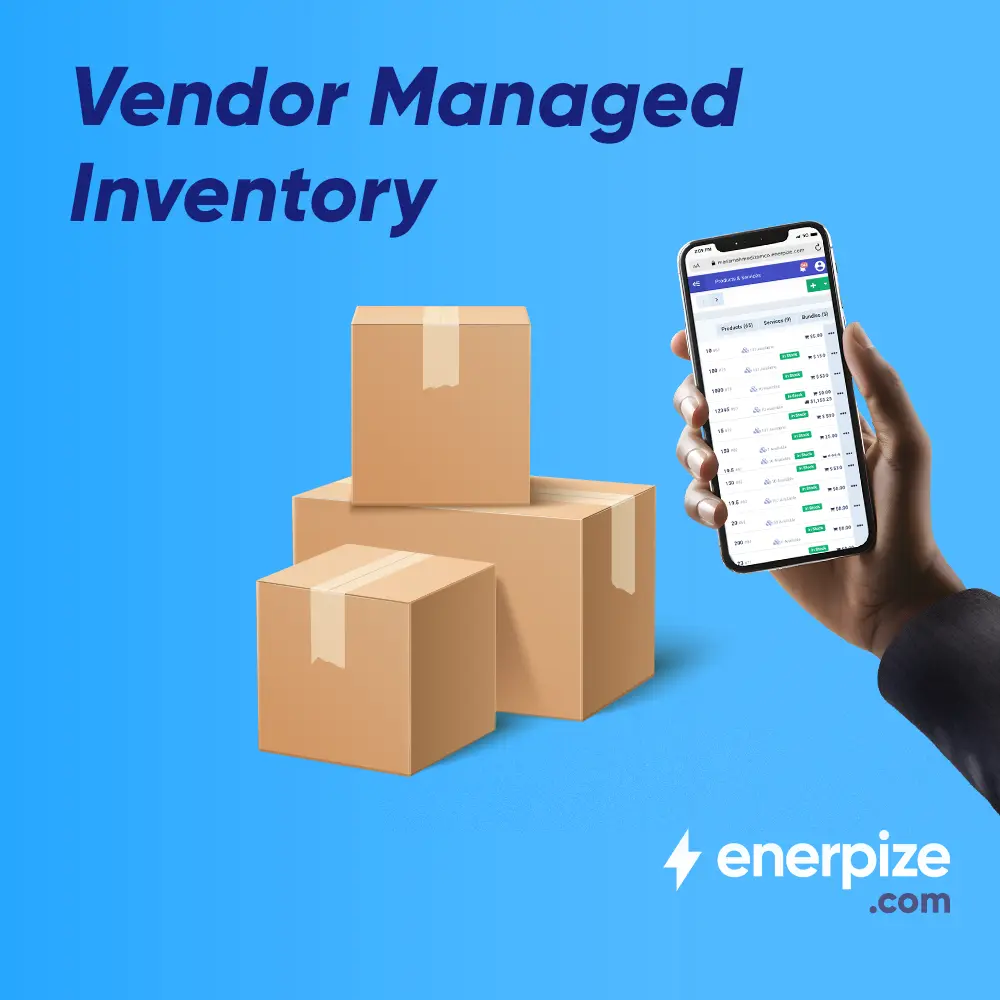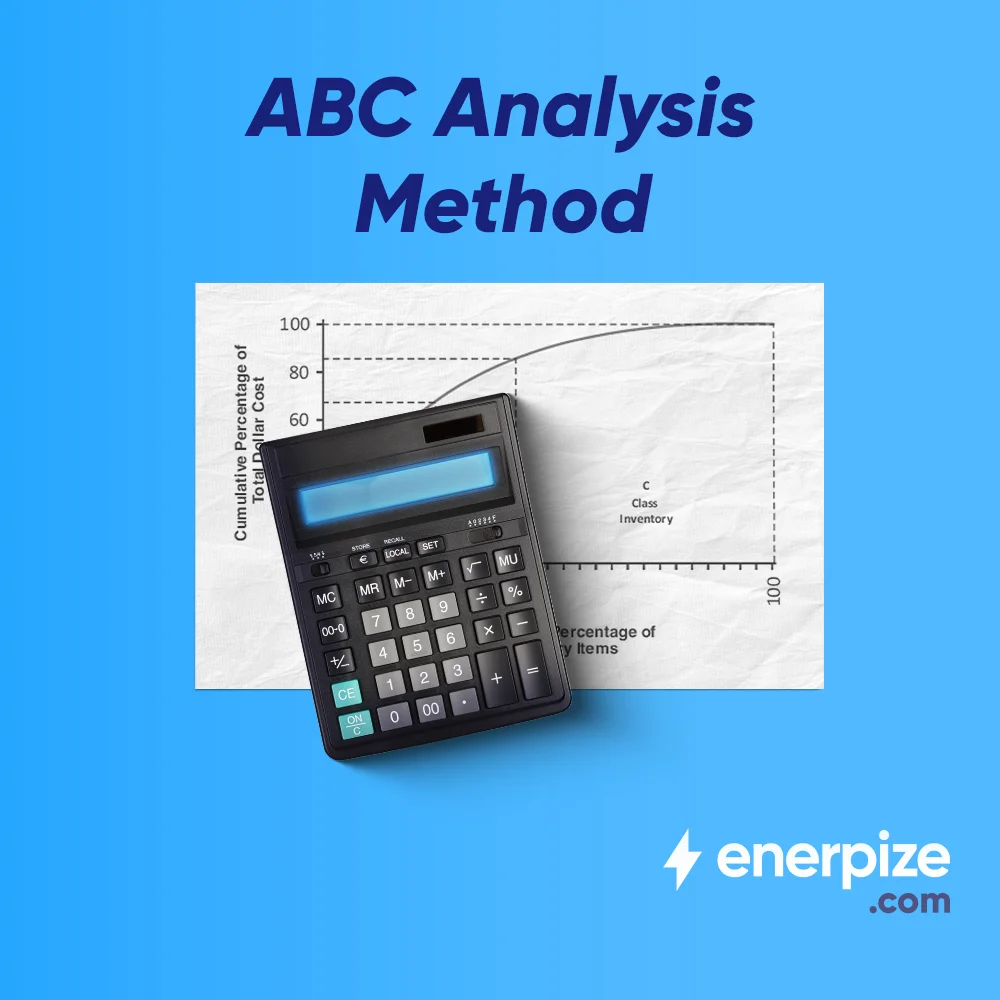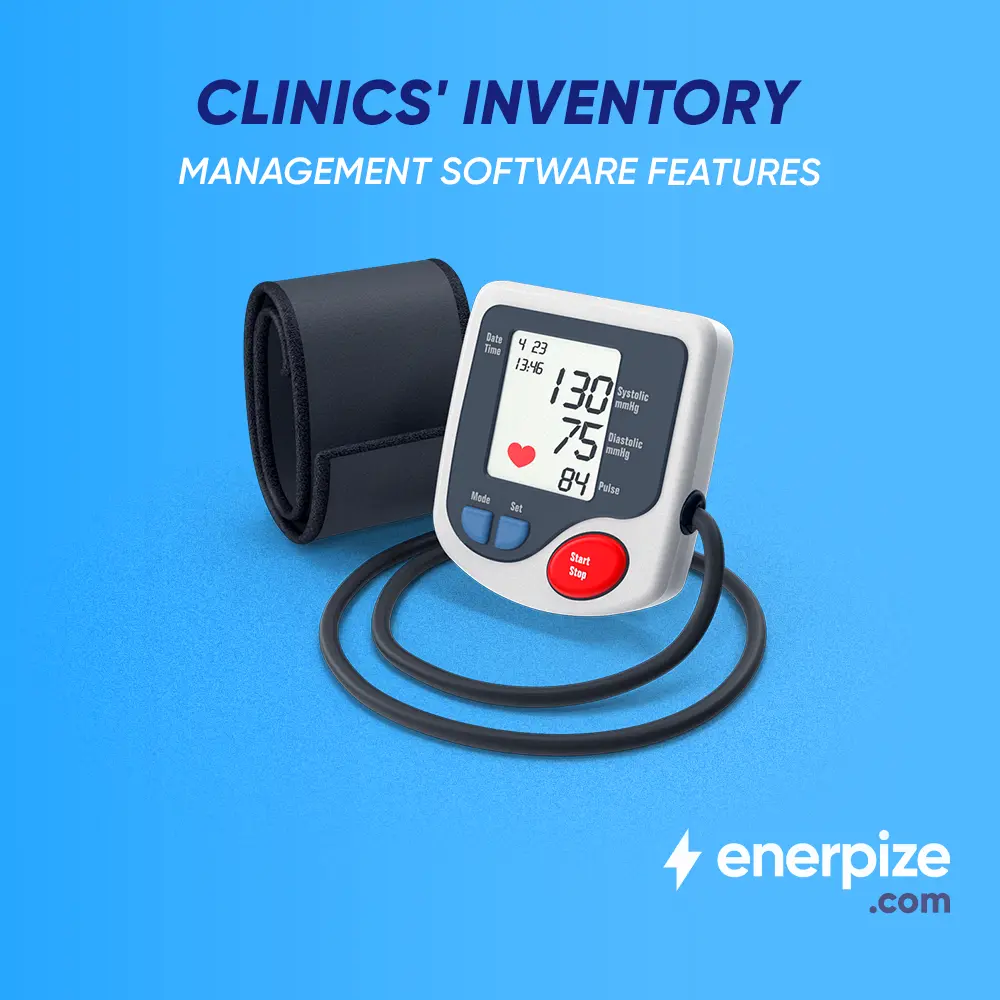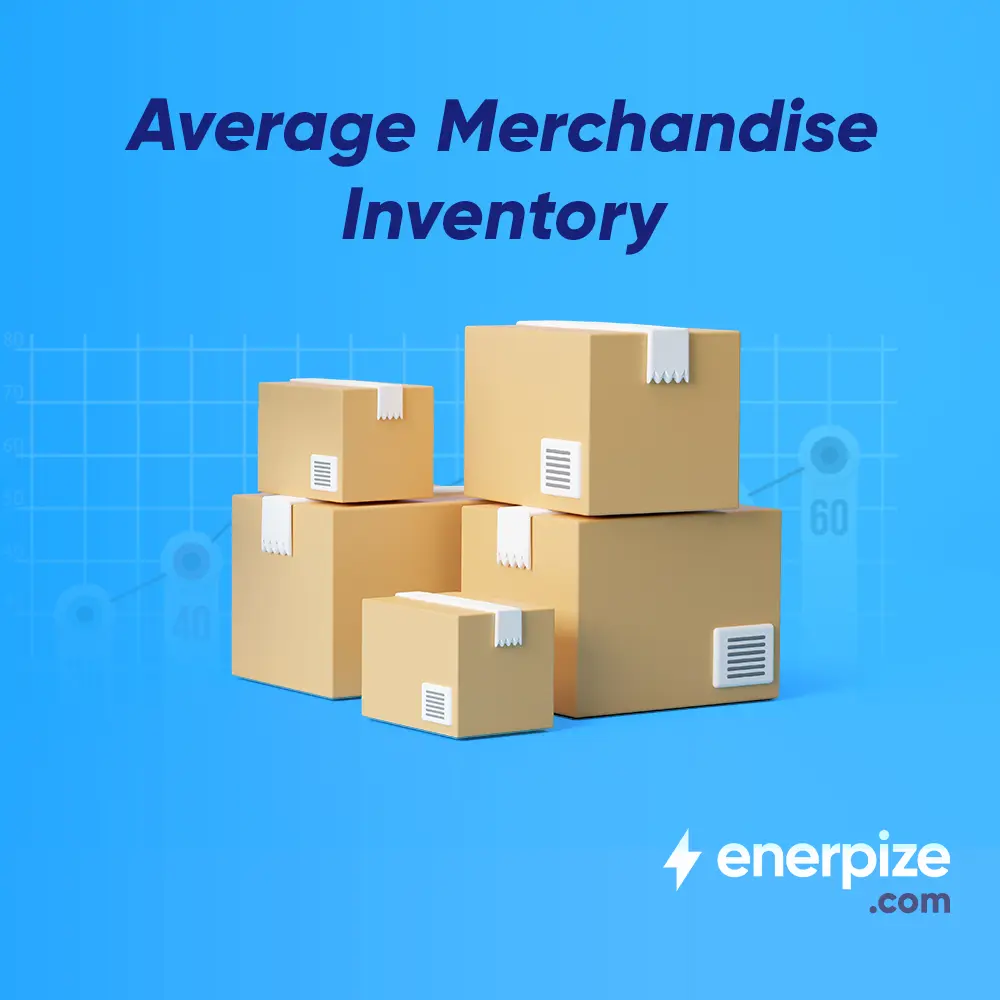Author : Haya Assem
Reviewed By : Enerpize Team
Perpetual Inventory System: Definition, Formula, Calculations
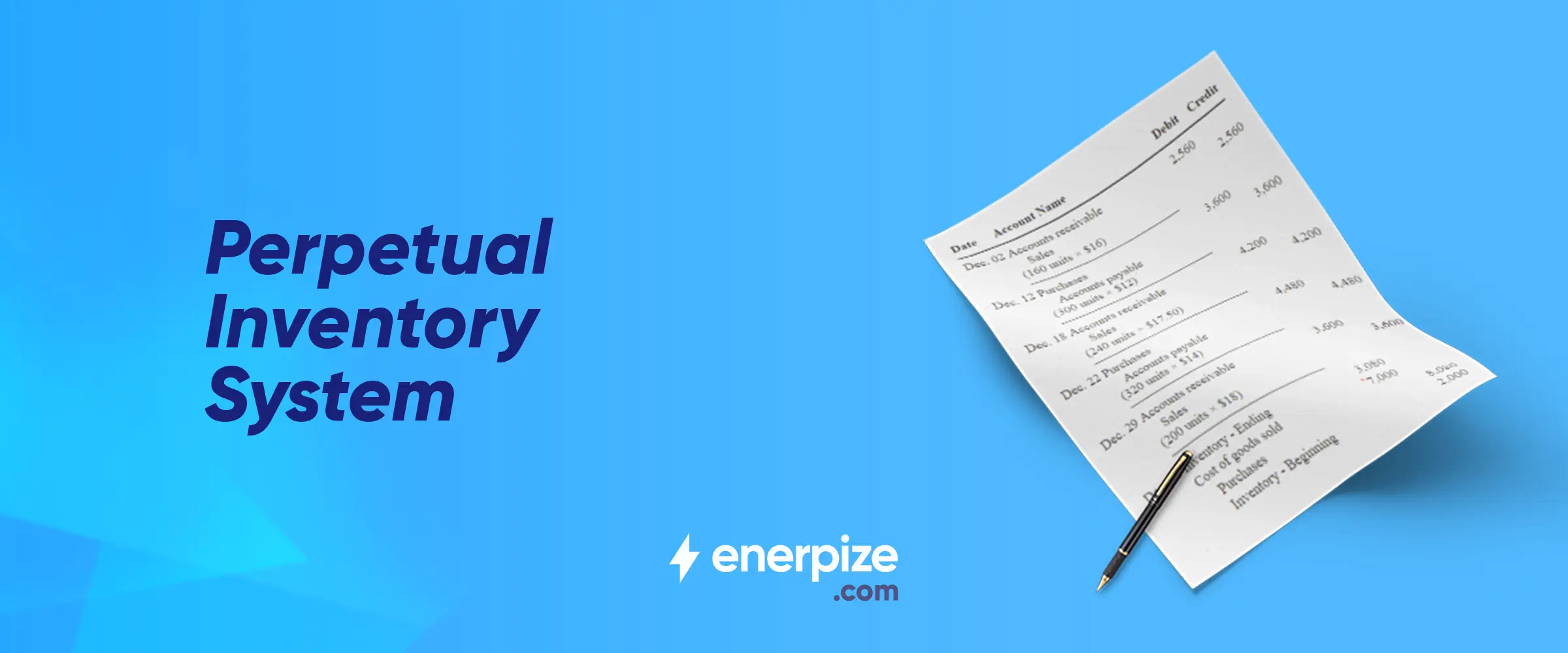
Table of contents:
- Key Takeaways
- What is a perpetual inventory system?
- Advantages and disadvantages of the perpetual inventory system
- Key differences between Periodic Inventory and Perpetual Inventory
- What is the perpetual inventory system formula?
- 8 Steps to Calculate the Perpetual Inventory System Formula
- When to use the perpetual inventory system formula?
- Application for perpetual inventory system formula
- Perpetual inventory system limitations
Efficient inventory management is a critical aspect of successful business operations, vital for seamless supply chain processes and ensuring customer satisfaction. Accurate tracking and real-time monitoring of stock levels are essential to prevent stockouts and overstock situations.
Manual or inaccurate inventory management can lead to costly errors, such as missed sales opportunities, delayed order fulfillment, and increased carrying costs, impacting customer loyalty negatively.
Implementing an automated system to track stock levels, such as perpetual inventory systems, can mitigate these consequences. Perpetual inventory systems offer real-time tracking by automatically updating records with each transaction, providing businesses with an up-to-date and accurate inventory view.
This continuous monitoring helps prevent stockouts, optimize reorder points, and improve overall supply chain efficiency. Additionally, perpetual inventory systems contribute to improving decision-making by offering insights into sales trends, identifying slow-moving products, and facilitating timely reorder decisions.
Key Takeaways
- The perpetual inventory system enables real-time tracking with automated updates for each transaction by integrating technologies such as barcoding. For effective operations, it provides accurate data, audit trails, reporting, and automated notifications.
- The advantages of a perpetual inventory system include real-time stock updates, multiple location management, precise forecasting, and seamless financial statement preparation.
- It has disadvantages as well, such as high costs, potential stock loss, exposure to hacking, and the chance of incorrect tracking, which may compromise the system's integrity.
- The perpetual inventory system does not have a specific formula, there are calculations associated with it, such as the COGS, ending inventory, and economic order quantity.
- Perpetual inventory systems benefit businesses with high turnover, providing real-time data for strategic decisions and precise cost tracking. It ensures accurate COGS calculations and supports auditing for regulatory compliance, but simpler businesses may prefer periodic systems based on specific needs and resources.
What is a perpetual inventory system?
A perpetual inventory system is a method of inventory tracking and management in which the quantity of products on hand is constantly updated in real time.
Every transaction, such as a sale, purchase, or return, causes an immediate and automated change in the inventory records. This ensures that the inventory levels reported are always accurate, providing a real-time depiction of the current stock available.
The perpetual inventory system has real-time updates and technology integration such as barcoding. It ensures that inventory data are updated immediately for each transaction, allowing for continuous monitoring and smooth connection with other systems. The system features thorough audit trails, robust reporting tools, and automated notifications for efficient ordering operations.
Read Also: ABC Analysis Method: Definition, Advantages, and Disadvantages
Advantages and disadvantages of the perpetual inventory system
The perpetual inventory advancement has proven to be a game-changer for businesses looking to streamline their operations and enhance decision-making processes. However, like any system, perpetual inventory comes with its set of advantages and disadvantages, each impacting businesses in various ways.
Advantages
Real-time stock update
Perpetual inventory systems excel at providing a dynamic immediate updating of inventory levels. This real-time monitoring ensures that businesses always have accurate information on the quantity and location of their stock.
Multiple Location Management
Inventory management across several locations or warehouses can be difficult for businesses with diverse sites. Perpetual inventory systems provide centralized inventory control across multiple locations. These simplified management capabilities allow for a more coherent approach to inventory control, reducing the risk of errors, stock inconsistencies, and order fulfillment delays.
More Precise Forecasting
The cornerstone of precise forecasting is accurate and real-time data. Businesses may use perpetual inventory systems for accurate demand forecasting. Companies can generate precise forecasts about future demand by analyzing historical sales data, identifying trends, and understanding consumption patterns.
Financial Statement Preparation
The seamless integration of perpetual inventory systems with financial accounting procedures is one of their most prominent advantages. As inventory transactions occur, these systems immediately update financial records, allowing for the generation of accurate and timely financial statements.
This connection improves transparency and accountability, making it easier for businesses to comply with regulatory obligations and offer credible financial information to stakeholders.
Disadvantages
Costly
The system implementation might be costly. The initial cost includes the purchase of software and hardware, as well as staff training to utilize and maintain the system. Small and medium-sized businesses may find the initial fees costly, and recurring costs like software upgrades and maintenance may lead to a higher total cost of ownership.
Stock loss
In some cases, the system might lead to inventory loss, such as inaccurate data input, technical errors, damage, spoilage, and theft. When an estimated perpetual inventory does not correspond to a subsequent physical inventory, the difference results in a loss.
Hacking
Perpetual inventory systems, being reliant on technology and interconnected networks, are susceptible to hacking and cybersecurity threats. A system hack might result in illegal access, inventory record manipulation, or even the theft of sensitive business data.
Inaccurate Tracking
Any errors in tracking, whether caused by human mistake, equipment malfunction, or insufficient training, could compromise the whole system's integrity. Inaccurate tracking may lead to incorrect inventory levels, resulting in stockouts or overstock situations.
Download Now: Free Inventory Management Template!
Key differences between Periodic Inventory and Perpetual Inventory
Running a successful business requires choosing a suitable inventory management system, and there are two main systems for keeping track of stock: periodic and perpetual inventory systems. The approaches to inventory tracking and management used by these systems vary considerably. Here are the key differences between the two:
| Difference | Perpetual Inventory | Periodic Inventory |
| Recording Transaction | Recorded in real-time as they occur, automatically affecting the inventory balance. Provides a constant and up-to-date overview of inventory levels, allowing for precise stock tracking at any time. | Transactions are periodically recorded at the end of a specified accounting period, such as a month or a year. Relies on physical inventory counts to calculate the closing balance and cost of goods sold (COGS). |
COGS Accounting
| Real-time tracking of inventory levels is maintained. COGS is calculated at the time of each sale by directly reducing the inventory based on the cost of the sold items. | Inventory is not tracked regularly during the accounting period. Cost of Goods Sold (COGS) is calculated periodically by subtracting ending inventory from the sum of beginning inventory and purchases. |
| Closing Entries | Closing entries for revenue and expense accounts other than COGS are prepared like the periodic system. However, since COGS is continually updated, there is no separate closing entry needed for COGS. | The closing entry involves transferring the balances of revenue and expense accounts (including COGS) to the income summary account. The income summary account is then closed to retained earnings. |
| Cost and Complexity | Involve higher upfront costs due to the purchase of inventory management software, hardware, and potential training expenses. | Less expensive to develop and operate. As they are less complex and need less technological infrastructure, they are more accessible to small businesses with limited resources. |
| Error Margin | Provides continuous visibility and prompt identification of inconsistencies. This reduces the margin for errors and improves accuracy in tracking inventory levels and associated expenses. | Relies on physical counts and manual adjustments. This might result in a higher margin of error due to the delayed identification and adjustment of inconsistencies. |
Read Also: Vendor-Managed Inventory: Definition, Types, and Advantage
What is the perpetual inventory system formula?
While the perpetual inventory system does not have a specific formula, there are calculations associated with it, such as the COGS, ending inventory, and economic order quantity.
These formulas are considered as perpetual inventory system calculator
and components of the overall accounting process and are impacted by the perpetual system's ongoing inventory level tracking.
Cost Of Goods Sold (COGS)
Cost Of Goods Sold is the total direct costs associated with producing or purchasing the goods that a company sells during a specific period.
COGS Formula
COGS = Beginning Inventory + Net Purchases − Ending Inventory
.png)
Read More: How to Calculate Cost of Goods Sold: Formula & Examples
Ending Inventory
Refers to the total value of goods and products that remain unsold and are still in the possession of a business at the end of a specific accounting period, such as a month, quarter, or year.
Ending Inventory Formula
Ending Inventory = Beginning Inventory + Net Purchases − COGS
.png)
The Economic Order Quantity (EOQ)
It is a formula used in inventory management to determine the optimal order quantity that minimizes the total inventory holding costs and ordering costs.
Economic Order Quantity Formula
√2D × S ÷ H
- D: demand for the product (units per time period).
- S: ordering cost per order.
- H: holding cost per unit per time period.
.png)
Gross Profit
Gross profit represents the variance between the revenue generated through the sale of products or services and the expenses associated with their production or acquisition during a specific accounting timeframe.
Gross profit formula
Gross Profit = Revenue – COGS
.png)
8 Steps to Calculate the Perpetual Inventory System Formula
There are various phases involved in calculating values for the perpetual inventory system. Here are the important steps for determining the formulae associated with the perpetual inventory system:
1- Beginning Inventory
Determine the value of the inventory at the beginning of the accounting period. This includes the cost of goods from the previous period.
2- Net Purchases
Calculate the net purchases by adding all purchases made during the accounting period and subtracting any purchase returns or discounts.
3- Cost of Goods Available for Sale
Add the beginning inventory to the net purchases to find the total cost of goods available for sale.
4- Calculate COGS
Follow the previously discussed formula to determine COGS value.
5- Calculate Ending Inventory
Use the formula for ending inventory to find the value of the inventory at the end of the accounting period.
6- Economic Order Quantity (EOQ)
Follow the previously discussed formula to determine the EOQ value.
7- Assess Inventory Costs
Evaluate total inventory costs, considering ordering and holding costs based on the calculated EOQ.
8- Adjust Order Quantity
If needed, adjust the order quantity, considering operational constraints while aiming to minimize total inventory costs.
Read Also: What Is Average Inventory and How to Calculate?
When to use the perpetual inventory system formula?
- Perpetual inventory systems are highly beneficial when a business's inventory turnover rate is high. Continuous tracking guarantees that changes in inventory levels are reflected in the system as soon as possible, allowing for better stock control and management.
- Additionally, businesses that require real-time data for decision-making, such as estimating reorder points, analyzing sales trends, or responding quickly to changes in demand can benefit from this system significantly. It provides immediate and accurate information to support strategic decisions.
- Organizations that need accurate and continuous tracking of the cost of goods sold (COGS) find the perpetual inventory system beneficial. COGS calculations are more precise with real-time updates, aiding in financial reporting and analysis.
- The perpetual system provides a reliable and transparent record of inventory transactions for auditing purposes and regulatory compliance. Auditors can verify transactions throughout the accounting period rather than relying solely on periodic physical counts.
- While the perpetual inventory system has several advantages, businesses with simpler inventory needs or limited resources may prefer periodic inventory systems. The decision between the two is determined by the business's specific needs, operational scale, and industry characteristics.
Application for perpetual inventory system formula
In a perpetual inventory system, inventory levels are continuously updated in real-time as transactions occur. Here is a perpetual inventory system example to illustrate how the system works:
Purchase of Inventory
- Let's say a company starts with a beginning inventory of $50,000.
- They purchase additional inventory worth $20,000.
- The perpetual inventory system would immediately update the inventory to $70,000 (50,000 + 20,000).
Sale of Inventory
- If the company sells $10,000 worth of goods, the perpetual inventory system would deduct this amount from the inventory.
- The updated inventory would be $60,000 (70,000 - 10,000).
Return of Goods
- Suppose a customer returns $1,000 worth of goods.
- The perpetual inventory system would increase the inventory instantly by $1,000 (60,000 + 1,000).
- The new inventory balance would be $61,000.
COGS Calculation
- If the cost of the goods sold is $20,000, the perpetual inventory system would subtract this from the current inventory.
- The updated inventory would be $41,000 (61,000 - 20,000).
Real-time Reporting
Managers can generate real-time reports to see current inventory levels, identify fast-moving and slow-moving items, and make informed decisions about reordering.
Download Now: Free Excel Reorder Point Template
Integration with Other Systems
The perpetual inventory system can be integrated with other business systems like sales, accounting, and order processing for seamless and accurate record-keeping.
Perpetual inventory system limitations
While the perpetual inventory system is a useful tool for keeping accurate and up-to-date inventory data, it does have some limitations and considerations:
Technology Dependence
For real-time tracking, perpetual inventory systems rely mostly on technology. If there are technical problems or system outages, the accuracy of the inventory data could be impacted.
Security Concerns
Data breaches and illegal access are possible since perpetual inventory systems rely on technology and databases. To secure sensitive information, adequate security measures must be in place.
Scalability Concerns
The amount of transactions and the complexity of inventory management may rise as a company expands. To accommodate higher datasets and transaction volumes, the system must be scalable.
FIFO or LIFO assumption
The perpetual inventory system is predicated on a certain cost flow method, such as First-In-First-Out (FIFO) or Last-In-First-Out (LIFO). Choosing the wrong strategy might have an impact on financial reporting and tax liability.
Recommended for you: LIFO Excel Template
Unpredictable market Conditions
Rapid changes in market conditions, such as unexpected increases or decreases in demand, may have an impact on the accuracy of perpetual inventory records, especially if adjustments are not made promptly.
Despite these drawbacks, many businesses find perpetual inventory systems useful for providing real-time data and facilitating effective inventory management. When considering whether to use a perpetual inventory system, businesses must carefully assess their unique needs, resources, and the nature of their inventory.
Read Also: Benefits of Using Inventory Management Software for Medical Clinics
Inventory management is easy with Enerpize.
Try our inventory module to manage your inventory.

